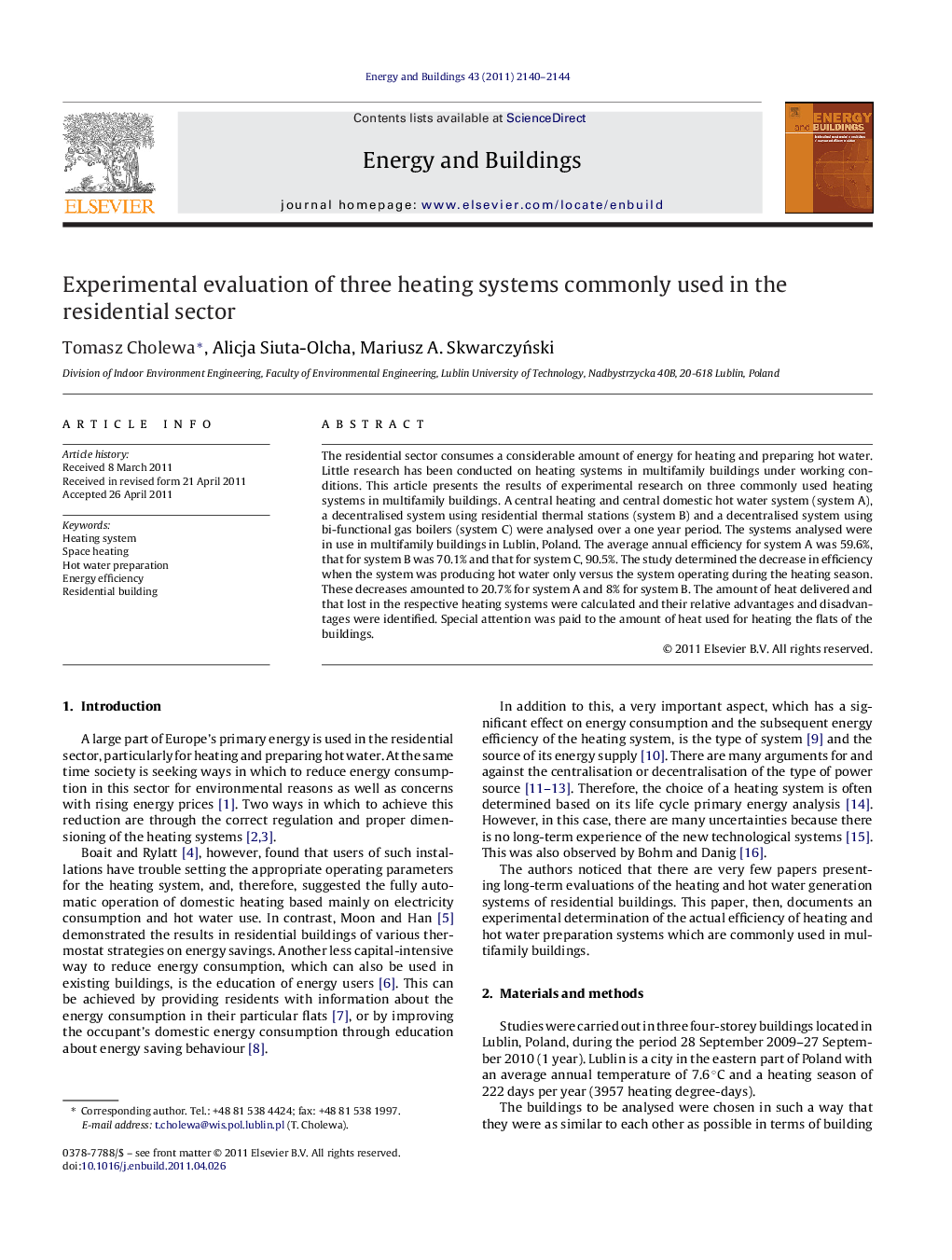| Article ID | Journal | Published Year | Pages | File Type |
|---|---|---|---|---|
| 264300 | Energy and Buildings | 2011 | 5 Pages |
The residential sector consumes a considerable amount of energy for heating and preparing hot water. Little research has been conducted on heating systems in multifamily buildings under working conditions. This article presents the results of experimental research on three commonly used heating systems in multifamily buildings. A central heating and central domestic hot water system (system A), a decentralised system using residential thermal stations (system B) and a decentralised system using bi-functional gas boilers (system C) were analysed over a one year period. The systems analysed were in use in multifamily buildings in Lublin, Poland. The average annual efficiency for system A was 59.6%, that for system B was 70.1% and that for system C, 90.5%. The study determined the decrease in efficiency when the system was producing hot water only versus the system operating during the heating season. These decreases amounted to 20.7% for system A and 8% for system B. The amount of heat delivered and that lost in the respective heating systems were calculated and their relative advantages and disadvantages were identified. Special attention was paid to the amount of heat used for heating the flats of the buildings.
► Experimental research on three heating systems in multifamily buildings are presented. ► The average annual efficiency for each system is determined. ► A system with decentralised heating and hot water preparation may reduce energy needs. ► The efficiency of heating system decrease when it produces only hot water.
